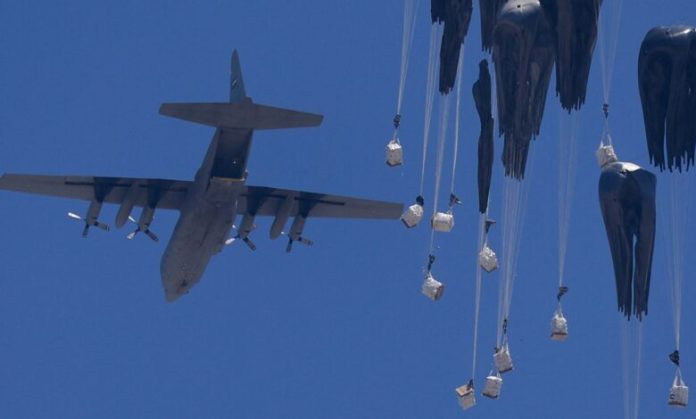The humanitarian catastrophe in Gaza has reached a critical breaking point, with both Hamas and international monitors sounding the alarm over what is being described as a deliberate “weaponisation of hunger” by Israel, reported the Al Jazeera. The crisis escalated further on Wednesday as at least 48 Palestinians were killed and dozens injured while waiting for food at the Zikim Crossing in northern Gaza.
Hamas, in a strongly worded statement issued earlier, condemned Israel for turning food into a “weapon of slow killing” and using humanitarian aid as a tool for “chaos and looting.” The Palestinian resistance group accused Israeli forces of systematically targeting relief convoys, limiting essential supplies, and aggravating the starvation crisis through a tightly enforced blockade.
The situation has been described as a “catastrophic famine,” with over 600 aid and fuel trucks needed daily just to meet basic humanitarian needs. However, only a fraction of that number is currently being allowed in, according to both Hamas and aid organisations. “Breaking the siege is the only solution to end the spiraling hunger crisis,” Hamas stated, urging international bodies to expose what it called Israel’s “starvation engineering.”
The Integrated Food Security Phase Classification (IPC), the world’s top hunger monitoring agency, issued a dire warning, stating that Gaza has now entered the “worst-case scenario of famine.” While a formal famine declaration has not been made due to limited access to on-ground data, the IPC confirms that famine thresholds have already been met in most areas, particularly in Gaza City.
Tragically, the desperation for food has led to deadly consequences. On Wednesday, at the Zikim Crossing, Shifa Hospital in Gaza reported 48 deaths and dozens of injuries as people waited for food. It remains unclear who opened fire, though the Israeli military has not issued a statement. Associated Press footage showed victims being rushed in wooden carts, and survivors carrying blood-stained flour bags amid chaos.
The Gaza Health Ministry reported that Al-Saraya Field Hospital had received over 100 dead and wounded from the scene. In addition, at least 46 Palestinians were killed in separate Israeli strikes overnight, most of them seeking food, while seven others, including a child, died of malnutrition.
The IPC revealed that one in three Gazans is going days without food, and over 20,000 children have been admitted for acute malnutrition treatment since April—more than 3,000 in critical condition. Nearly 17% of children under five in Gaza City are acutely malnourished.
Despite growing international pressure, Israel has only modestly eased the blockade, allowing in 220 aid trucks on Tuesday—far short of the 500-600 trucks needed daily. Moreover, aid distribution remains chaotic, often disrupted by desperate crowds and limited by access restrictions.
International airdrops of aid have resumed, but many packages have landed in zones deemed unsafe, or even in the sea, forcing civilians to risk their lives to retrieve basic food items. More than 1,000 Palestinians have reportedly been killed while trying to access aid since May, according to the UN and local health officials.
The Gaza Health Ministry confirmed that 89 children and 65 adults have now died from malnutrition since the beginning of the war. Israel, however, continues to deny that starvation exists in Gaza and blames Hamas for civilian suffering.
Since October 7, 2023—when Hamas launched an attack on southern Israel that killed around 1,200 people and led to the taking of 251 hostages—Israel’s retaliatory offensive has killed over 60,000 Palestinians, according to Gaza’s Health Ministry. The ministry, despite operating under the Hamas-run government, remains the primary source of casualty data for international agencies.
The worsening famine, relentless bombardment, and deteriorating humanitarian conditions in Gaza have made the strip one of the most dangerous and tragic zones in recent global history.




